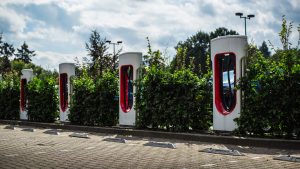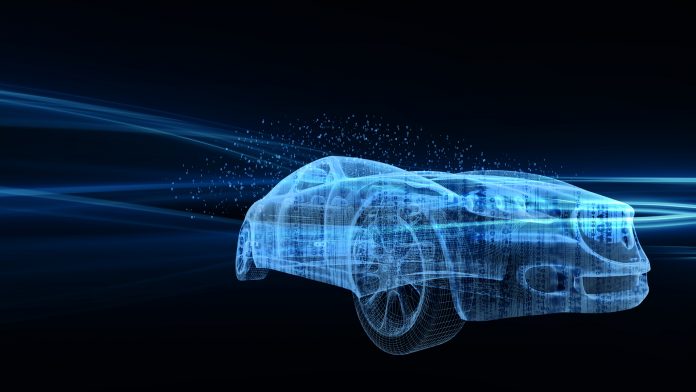Neil Wallis, Head of Communications at the Zemo Partnership, details the UK’s challenges on its journey to zero transport emissions.
In July 2021, the Department for Transport set out its commitments and actions to decarbonise the whole transport system in the UK. ‘Decarbonising transport: a better, greener Britain’ set out an action plan for aviation, renewable fuels, road transport emissions, maritime, the rail network, roads and low emission and electric vehicles (EVs). However, as with all ambitious plans, concerns were raised that the plan was set amid ‘blue-sky’ thinking, and the infrastructure and technologies required do not yet exist.
Lisa Carnwell, Managing Editor at Innovation News Network, discussed the challenges with Neil Wallis, Head of Communications at the Zemo Partnership, and what urgent actions must be taken to meet zero emission pledges.
Can you provide the background and focus of the Zemo Partnership?
We were set up in 2002 as a stakeholder partnership of the UK’s Powering Future Vehicles Strategy when the agenda was in its infancy. We operated for some time as the Low Carbon Vehicle Partnership (LowCVP) and rebranded earlier this year to the Zemo Partnership because of the increased emphasis on a zero emissions target rather than low carbon. We are essentially the conveners of the broadest range of stakeholders, focusing on the decarbonisation agenda for road transport (the biggest contributor to transport overall).
We are home to over 230 member organisations. They come from a whole range of stakeholders from the motor and energy industry, all the way through to NGOs (WWF is a member). Greenpeace’s Chief Scientist, for example, was also on our Board for many years. So, we have an extensive range of stakeholders that input into our processes, and we work closely with the UK Government as a testing and development ground for potential policies.
We are part of the whole ecosystem of organisations that are helping the government with the decarbonisation agenda. We are part-funded by government and our membership, and we aim to give value to members while also fulfilling our remit of highlighting our work as widely as possible.
Our focus is primarily on road transport, but while we acknowledge that there have to be behavioural changes, our focus is concerned with the vehicles we move around in and what produces and powers them, examining the most suitable vehicles for various purposes, and getting the best technology into the market as quickly as possible in order to achieve zero transport emissions.
What are the priority actions you are working on to support the UK Government’s Transport Decarbonisation Plan?
We published a three-year programme earlier this year alongside the announcement of our rebrand to Zemo that detailed the areas of focus. One area is accelerating buses to zero emissions, aiming to transform the urban bus sector into 100% zero transport emission new bus sales by 2024. Freight is also a large area, with more challenges and more options in decarbonising the industry, particularly long-haul freight.
In terms of technology, particularly around batteries, it is more challenging to get the power required for large vehicles. However, batteries are making inroads into smaller commercial vehicles for urban deliveries. The ambition in that area is for 20% of new vans and 10% of new light trucks to be zero transport emissions by 2024. We have a particular and growing focus on reducing the size of vehicles, ensuring they are the right size for their purpose, particularly in urban areas. Regarding personal mobility, we are looking for 35% of new car sales to have a significant zero transport emission range in 2024.
To maximise the adoption of zero emission and light-duty vehicles by 2024, with minimal impact on the energy system, we have a further ambition for 75% of the mileage of plug-in hybrid vehicles to be zero emissions. There is a challenge with plug-in hybrids, as they should be plugged in efficiently and used in the right way to maximise their benefit.
We have done a lot of work on renewable fuels, emphasising sustainability and accreditation of those fuels and recently launching our assurance scheme. Debates have taken place about first-generation biofuels and their impacts on land use, for example. Still, renewable fuels come in many guises and sources (waste being the biggest feedstock currently). The Zemo view is that there is a role for a wide range of renewable fuels, particularly in the short and medium-term, and for vehicles that are hard to electrify. We have published many reports and studies on renewable fuels like biomethane. The ambition is to pull forward the Renewable Transport Fuel Obligation Target (RTFO) and deliver 12.5% of transport energy to be renewable fuels by 2024. 2024. That is a pretty tough target, considering how close we are to that date, but the July Plan from the UK Government also increased their targets, and the introduction of E10 this year means ours is undoubtedly achievable.
A substantial and growing area for us is vehicle electrification. We convene the Electric Vehicle Energy Taskforce (EVET) jointly with the Energy Systems Catapult. We are at the centre of activity on delivering smart energy in the charging system to facilitate and enable the mass rollout of EVs. We work with a broad range of stakeholders across the energy and transport sector, going well beyond our membership. The EVET is a large operation, and the aim is to remove the consumer barriers to the widespread adoption of EVs and maximise the whole system benefits.
Through all our discussions, we also keep an eye on the air quality agenda. We think many of the policy prescriptions dealing with climate change, which is our primary focus, also tally with what needs to be done in terms of air quality. There is a big air quality agenda in the UK through our Clean Air Zones, and we are looking at how the two can be tied together and how policy responses to one, can carry over and benefit the other.
Another significant area of focus is on lifecycle emissions. It is increasingly clear that it is not only about what comes out of the tailpipe. With EVs, there are no tailpipe emissions. Still, there are emissions along the whole supply chain for those vehicles in their production, transporting them to the market, and crucially, at their disposal, which can be very significant. One must not forget the impacts of mining for materials and the manufacture of batteries, of course. We have recently been running a series of webinars analysing the lifecycle challenges, with an additional two webinars focusing on lifecycle analysis planned for December 2021 and January 2022. We are trying to concentrate policymakers’ thinking, not just on the tailpipe, but knowing that this will only work if we remove emissions from the whole life cycle and the energy to power it all.
What immediate challenges does the UK face in electrifying the transport sector?
In terms of vehicle electrification, infrastructure is a big concern. Behaviour, of course, is a factor, but all signs indicate a significant build-up of EV demand which is currently also supply constrained. At the moment, the challenge is often around people recharging them at a suitable location. The UK has a particular challenge of being a crowded country, unlike places like Norway, which are way ahead in the race to electrify.
In the UK, we are implementing kerbside, and other innovative means, to provide long-duration recharging facilities for householders without off-street parking. Home or office-based recharging is expected to be the mainstay of future charging challenges, supported by destination opportunities such as car parks and supermarkets. We are progressing on a nationwide infrastructure of fast and rapid chargers on the motorway network and critical points on trunk roads. We are also rolling out in residential areas in some cities, so drivers can recharge during a weekly shop and then use the car all week on the one charge. But there is still much to do, and there are many issues with the reliability and interoperability of charging points. Customers need to receive simple information detailing if the charging point they need is working and if there is a queue.

I do not want to understate the significance of the challenge of becoming part of the transition, particularly for specific groups and individuals. It is still costly to buy a new electric car. Still, the much lower running costs are often not as transparent, so the actual total costs of ownership are almost the same in many cases. The purchase cost gap is narrowing, but there are not enough EVs yet on the second-hand market, so they are still out of the price range for many people.
There are also challenges regarding bus and truck fleets where overnight recharging will have to occur, and these vehicles could cause a significant drain on the grid. We are, however, seeing real innovation in this space too, with different funding models for energy and batteries in buses and, of course, local energy storage, which charges during the day so that the grid connection need not be upgraded.
Regarding investment in infrastructure, the government is investing quite a lot. There certainly are situations when we need public funding to open the way for the private sector to deliver the charge points we need, but actually, the taps have opened, and we are now looking closely at more strategic public funding to target areas where the private business case doesn’t yet add up.
The Competition and Markets Authority (CMA) has said Britain could require ten times as many EV charge points before 2030. Do you believe we are on track to meet that target?
For this figure to be accurate, we first need to identify what kind of charge points. For instance, we could have ten times as many 3.6 kW chargers, but these would be of little use except for home-based charging as they are very slow. It takes 12-15 hours to get enough charge into a typical size battery, so we need rapid chargers on trunk roads and motorways. Again, this poses challenges of grid reinforcement in certain places.
So, we need to have the right chargers in the right place for the proper use. The market should determine how many and where these are located, with a core strategic approach overseen (and even mandated) by government. We have made significant progress in addressing this challenge, but there is still a great deal to do. The EV Energy Taskforce is looking directly at this question and modelling a range of scenarios to inform how the infrastructure should develop. One must not forget that what we are trying to achieve is unprecedented – it is effectively a second industrial revolution. But, on a positive note, I think we have shown how we can respond to significant events, particularly to the COVID-19 pandemic and the vaccine rollout, so we know if there is a will to succeed, then we can achieve great things.
How vital are technologies like smart and cloud-based charging?
Smart charging will be critical and is very much at the centre of what the EV Energy Task Force is analysing.
Even without smart technology, there are ways of balancing demand on the grid. If we get smart charging right, there is great potential to have energy flowing in the directions that we need it to, when we need it. With all the plans for a renewable energy-focused grid, there will be many challenges in terms of the variability of the energy supply to it. However, there is also massive potential in the EV batteries that will be in existence that can help, if we get it right, to balance that variability.
To answer the popular question about how we can provide electricity for all the EVs on the road, it is important to remember that we have surplus energy through renewables at certain times. When the wind is blowing, and the sun is shining, we quite often have too much power. So, we need to capture that when it is available to use in our car, truck and bus batteries. We can use that to feed back into the grid or supply energy to homes, offices or depots when supply is more limited. There are many possibilities here, and the government has mandated smart charging, so all new chargers are now smart, even if we still have a task to ensure all consumers are too!
It is not a simple and easy process for EV customers to go to any charge point to charge their car. They first must sign up on websites, scan QR codes and so on, but there is a lot of focus on making that much easier. Interoperability is another significant focus area of EVET and something the UK Government is adamant will be improved quickly. I believe we are and will continue to see rapid changes, and customers will soon be able to tap on a reader with a credit card or debit card and use almost any charger, anywhere.
As a high source of GHG emissions, the transport sector earned an entire day’s focus at COP26. What, in your opinion, were the significant highlights and outcomes?
The HGV announcement was no surprise because there had been a prior consultation in which the UK Government had floated the 2040 plan. The announcement it wanted to make at COP26 was to have a decarbonised road vehicle fleet by 2050 and the critical staging post of ending the sale of any emitting road vehicle in 2040. A similar target is in place for passenger cars and vans by 2035, and we are sure all road vehicles (motorcycles, buses etc.) will soon have target dates to match. So, after 2040 in the UK, all road vehicles will be zero emission at the tailpipe. We have repeatedly seen in the past that when given a clear but ambitious long term challenge such as this, after all the posturing and wringing of hands, the industry often excels at innovating and achieving targets.

I think the government probably hoped there would be more countries making a similar commitment for zero transport emissions than they did. Several international motor companies made a similar commitment, but many notable countries and companies were missing. We must remember there is a lot of pressure on companies to be ‘greener’. Many major organisations have signed up to commitments and will be required by the UK Exchequer to submit plans. This will cause them to focus their efforts, and I think it will increasingly be the case that it is a ‘no brainer’ to decarbonise their transport and other activities as quickly as practically feasible.
How does the UK Government drive Zemo Partnership activities, and how will you work with them to implement policies?
We work very closely with the UK Government and enter an annual process of agreeing with them and our members, the priorities for the coming year. We sometimes even agree on priorities up to three years in advance. We were asked, for example, to design a scheme around incentivising the adoption of zero emission buses. So, we convened our stakeholders and developed the Green Bus Fund (worth £90m) that delivered vehicles and supporting infrastructure.
We also help establish benchmarks for different kinds of technology so the government can base policy on practical evidence. Many areas require reliable data on which to pin regulation and policy, and we provide the finer detail required.
In addition to requests by the government, some of our stakeholders will also bring topics to the table, and we will assess them in particular where we can bring new and robust independent evidence to shape future policy. For example, we will continue to push on lifecycle analysis, to raise understanding and awareness that we need policy and regulations. It is an iterative process, but it is done in collaboration with civil servants in the Department of Transport (DfT), the Office for Zero Emission Vehicles (OZEV), the Department for Business, Energy and Industrial Strategy (BEIS), and in many cases, the Department for Environment, Food and Rural Affairs (DEFRA), in the Joint Air Quality Unit.
Finally, what do you hope to see happening in the years to come in terms of meeting our zero transport emission targets?
COP26 reminded me that despite all our discussions over many years, global carbon dioxide emissions have continued to rise, and we have not seen much flattening of that curve. The increases in our demand for transport have roughly compensated for all the efficiency improvements we have made thus far. Essentially, we are still pumping out as many harmful emissions from road transport in the UK; a trend which is mirrored globally. I would like to see an unambiguous indication that emissions are heading sustainably downward with a trajectory that will mean we get as close to zero as possible by 2050.
We also need to have nearer-term targets in mind. The Committee on Climate Change (CCC) keeps our minds focused on carbon budgets every five years, but we need to have more benchmarks, including near real-time greenhouse gas data for specific areas, to know whether we are on track or not.
We also need to examine how we live with fewer and smaller vehicles, exploring how to share vehicles better. The private ownership of cars, transitioning from a petrol or diesel fleet to an electric fleet, is not necessarily always the correct answer. There are still a lot of embedded emissions in EVs (and other low tailpipe-emission vehicles), and we need to find ways of reaching zero transport emissions better. It may mean different kinds of ownership and other mobility options.
The autonomous agenda could change the way we view ownership. Ordering a vehicle through an app, where it arrives independently to your door, could potentially solve some of the home charging infrastructure challenges. However, if it becomes easier and cheaper to travel, then people will do more of it. We have got to find ways to discourage even more travel than we already do. But no one action, innovation, policy or tool on its own will solve this for us. It is going to take collective perseverance and partnership if we are to reach zero emissions transport.
Neil Wallis
Head of Communications
Zemo Partnership
+44 (0) 20 7304 6880
hello@zemo.org.uk
www.zemo.org.uk
https://www.linkedin.com/company/zemo/
https://twitter.com/Zemo_Org
Please note, this article will also appear in the eighth edition of our quarterly publication.









